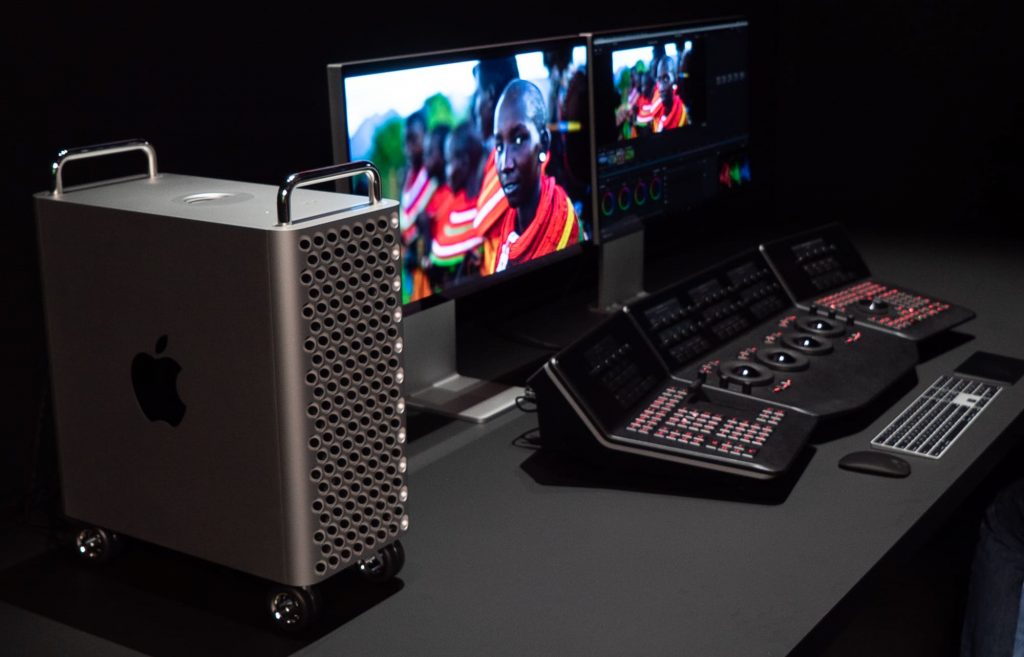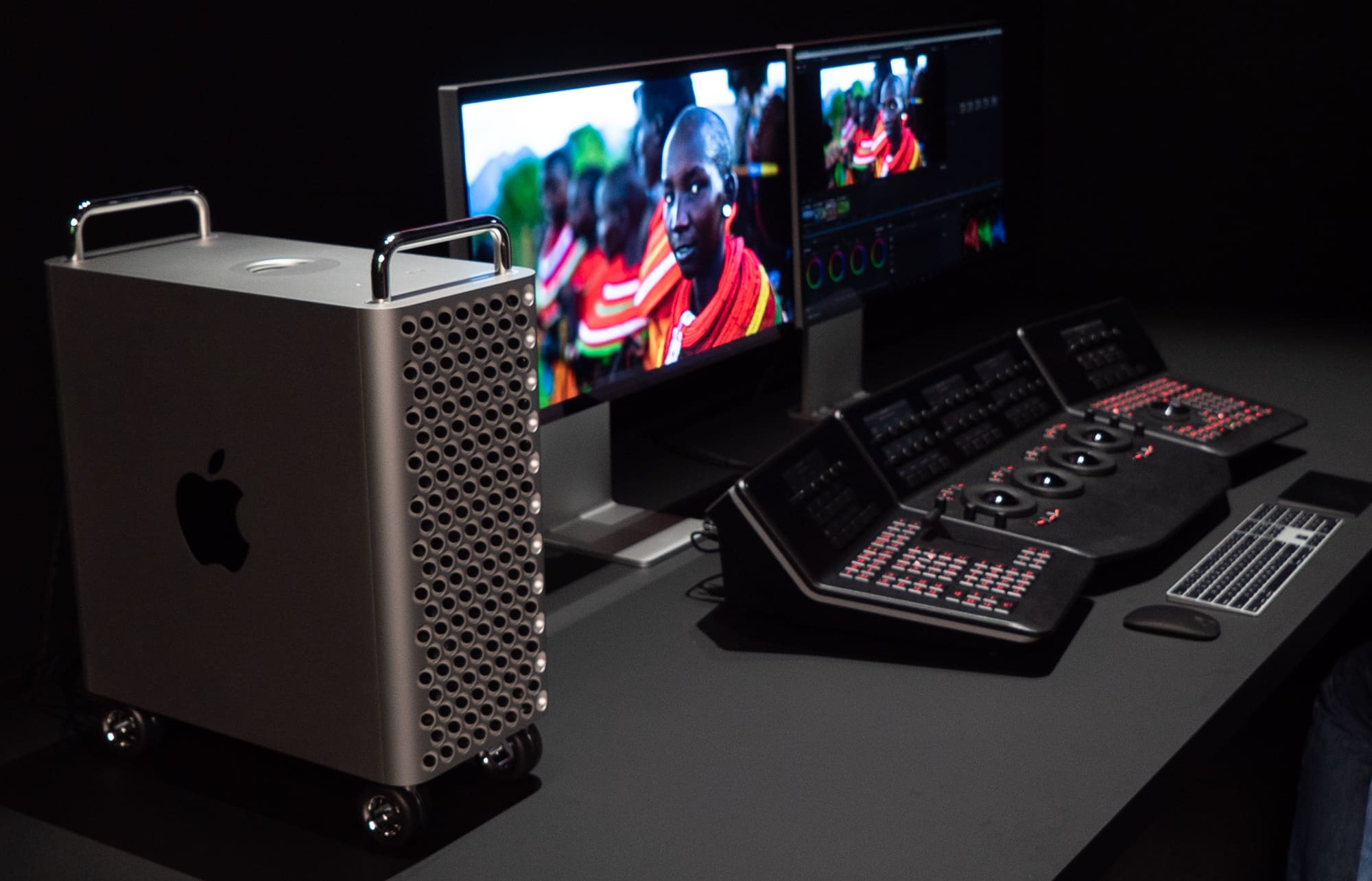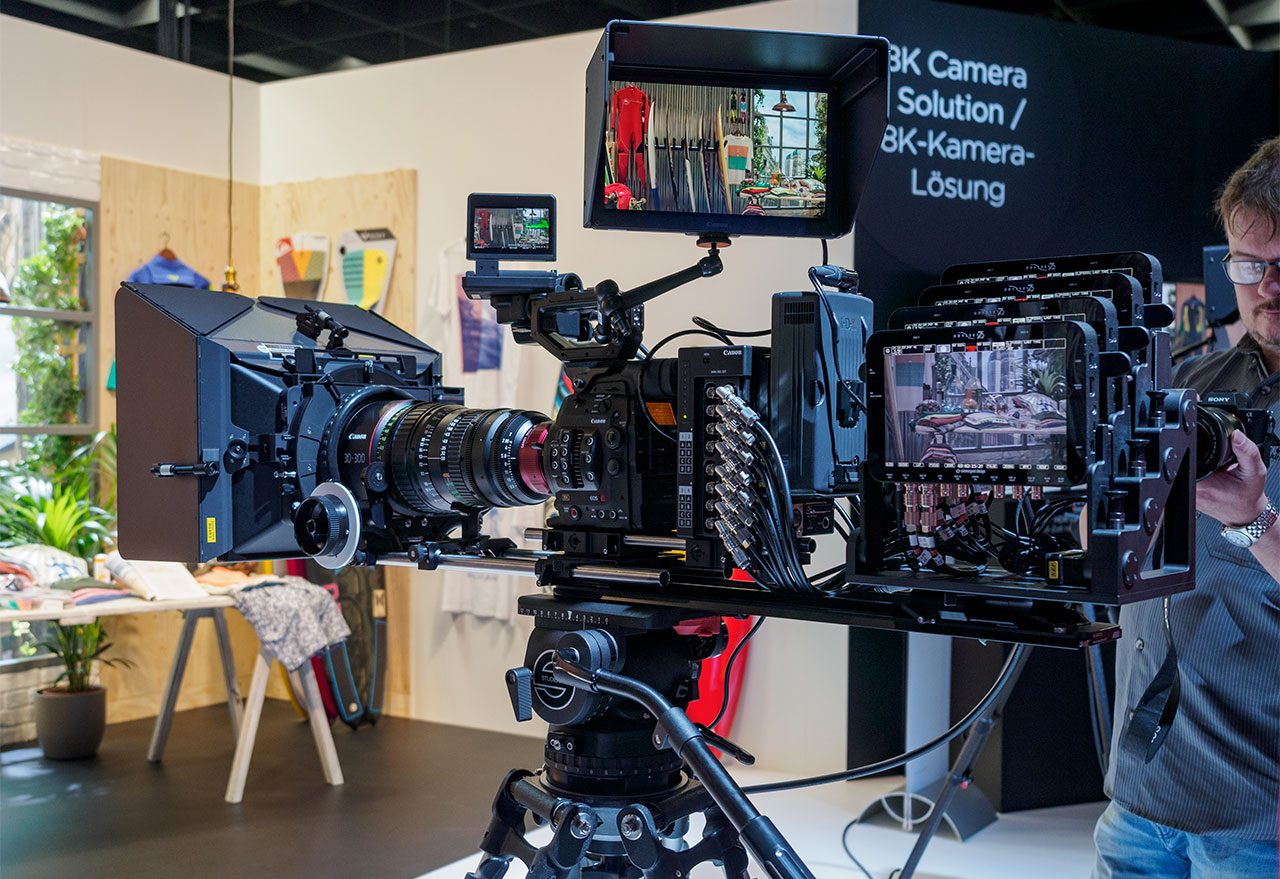
Rumours out of Apple WWDC 19 talk about both Canon and Nikon 8K cameras being used to shoot ProRes RAW 8K footage for Mac Pro demos.
Footage from a documentary about Nikon ambassador Ami Vitale photographing Kenya was supposably shot in ProRes RAW 8K and the speculation was she shot with an as-yet unreleased Nikon Z9 with 8K output to an external recorder. Actually the documentary was shot on RED Monstro in 8K by Kiwi cinematographer Mark Toia of ZOOM Film and Television.
Meanwhile a Canon 8K camera resembling a C300 II is seen shooting props against a green screen for augmented reality demos on the new Mac Pro. This prototype has actually been shown by Canon before, most recently in 2018 at Inter BEE. The prototype has an 8K sensor and processor, but recording is external via SDI.
Indeed, Canon’s Super 35mm 8K prototype first dates back to 2015 and has been steadily developing since.
The most interesting difference between the first prototype, which went on display in 2016 at Photokina, is that in 2016 only the 8K sensor existed. Processing and recording had to be done with no less than 4x Odyssey 7Q via a complex SDI output setup, then stitched together. So 3 years ago the 8K processing and codecs didn’t exist, and now in 2019 clearly they do, with RED leading the way and Canon still at the prototype stage.
Below: The 2016 Photokina prototype with 8K sensor only
As for Nikon, I don’t think we’ll be seeing an 8K camera from them for a long time. They don’t have a pro video or cinema business to speak of.
I expect Panasonic will give us 8K in a mirrorless camera before Nikon does… and I expect it to need an external recorder at first since the processing power required is very tough to fit into a prosumer mirrorless camera body, even in 2019 or 2020.
The Sony A7S III is expected to offer 8K H.265 or even 8K RAW using compression derived from H.265. You can read the rumours as featured on EOSHD here. Sony have already a full frame 8K sensor, so it will be interesting to see which cameras it goes into first and the long gap since the previous A7S II would suggest the next one needs a lot of time to get right.
8K is not all about cameras – Displays, content and computing power matter most
It will be interesting to see how the hardware most people use handles 8K material at first, and whether 8K displays will be affordable for anybody but larger businesses. Small professional businesses, content producers, prosumer and consumers will likely not be buying a Mac Pro or 8K display any time soon, and to be honest I don’t see why it even makes sense. They have other priorities.
It seems likely that 6K will be a stopgap offered on some devices but not very mainstream and that eventually we’ll settle at 8K as a consumer standard, but when?
You can already buy an 8K TV from Samsung but there’s almost nothing to watch in 8K on it, except perhaps the built in screen saver!
Viewing habits are dominated by small screens, from smartphones to internet streaming on personal computers and tablets. Younger generations seem to be moving away from larger screens like TVs, which makes 8K even more pointless from the perspective of the sofa viewer.
I am sure the 4K vs 8K debate will rage for years, but it doesn’t really matter. We should all shoot with the best image (to our tastes) we can get our hands on, and taken as a whole (dynamic range, colour depth, low light, detail, motion cadence, codec, compression) resolution is just one aspect of that… It shouldn’t really dominate all the other technical aspects that make an image cinematic – especially when all the technical aspects are trumped in the end by lighting and subject matter.
Although it will be great for documentary style reality, as far as the art of cinema goes, 8K is for the birds.






